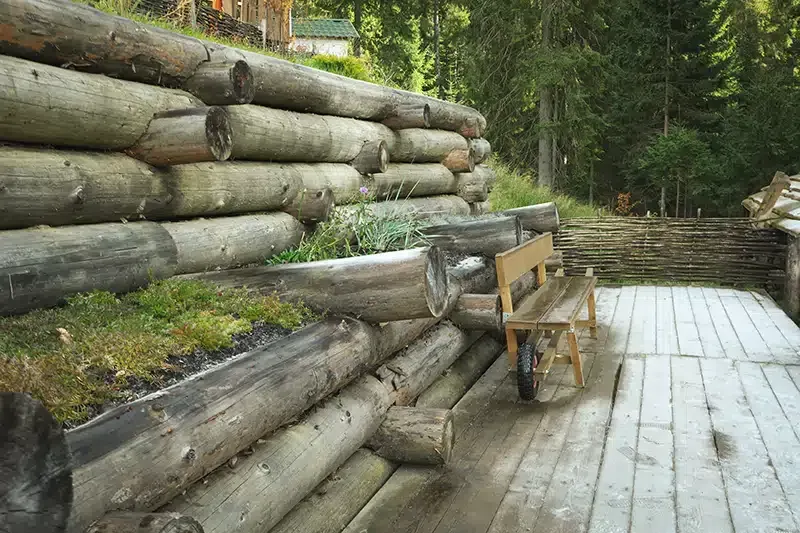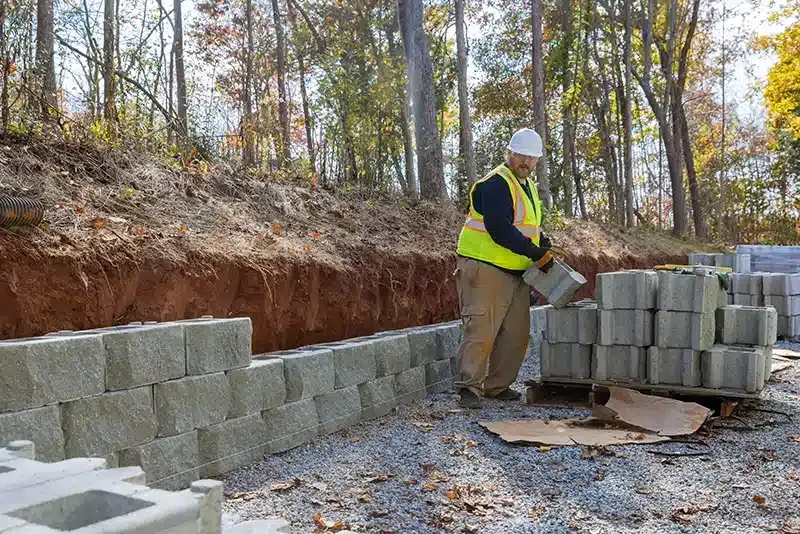What safety precautions are needed when building wood retaining walls?
What Safety Precautions Are Needed When Building Wood Retaining Walls?

Wood retaining walls are a practical and attractive solution for controlling soil movement, managing slopes, and creating level surfaces in both residential and commercial landscapes. While they’re often simpler to install than concrete or stone walls, wooden retaining walls still require careful planning and safety measures during construction.
Failing to take the right precautions can lead to structural failure, injury, or long-term maintenance problems. Whether you're a contractor or a property owner considering a wood retaining wall project, understanding and implementing safety protocols is crucial.
Proper Site Preparation
Preparing the site before construction begins is essential for both safety and structural integrity.
- Conduct a soil analysis: Different soil types behave differently under pressure, and knowing what you're working with will guide safe wall design.
- Clear the area of debris and hazards: Remove rocks, roots, and unstable ground to avoid tripping hazards and ensure a stable foundation.
- Mark underground utilities: Before digging, contact your local utility locating service to avoid hitting gas, water, or electrical lines.
Structural Stability and Design
Ensuring your wall is structurally sound is key to preventing collapses and injuries during and after construction.
- Use pressure-treated lumber rated for ground contact: This helps resist rot, insect damage, and soil pressure over time.
- Install proper drainage systems behind the wall: Water buildup can cause wall failure, so weep holes or drainage pipes should be included to relieve pressure.
- Anchor the wall with deadmen or tiebacks: These support systems extend back into the slope and keep the wall stable under load.
Safe Use of Tools and Equipment
Using tools correctly and maintaining awareness on the job site reduces the risk of accidents.
- Wear appropriate personal protective equipment (PPE): Gloves, safety glasses, and steel-toe boots can prevent common construction injuries.
- Operate power tools with caution: Follow manufacturer instructions and keep guards in place to avoid lacerations and kickbacks.
- Keep work areas organized and well-lit: Clutter and poor visibility are leading causes of preventable worksite accidents.
Compliance with Codes and Guidelines
Adhering to local codes not only ensures legality but also enforces industry-recognized safety standards.
- Check with your local building authority before starting: Many jurisdictions have height limits, setback requirements, and permit rules for retaining walls.
- Follow load-bearing and height restrictions: Walls over a certain height may need to be designed or reviewed by a structural engineer.
- Use properly sized fasteners and hardware: Undersized nails or bolts can fail under pressure, so always match hardware to the structural demands of your wall.
Weather and Environmental Considerations
Environmental conditions can affect safety during construction and impact long-term performance.
- Avoid building in wet or unstable weather: Rainy or frozen conditions can make footing dangerous and compromise the wall’s foundation.
- Grade the slope properly to divert water: Redirecting surface runoff away from the wall reduces erosion and maintains stability.
- Use retaining wall fabric or geotextile material: This helps prevent soil from washing through the wall and protects structural integrity.
Building a wood retaining wall involves more than just stacking timbers and pounding in nails. From preparing the site and selecting materials to following safety codes and environmental practices, each step requires thoughtful planning and caution.
Whether you’re tackling a DIY project or hiring a retaining wall contractor, prioritizing safety protects everyone involved and ensures a lasting result.


